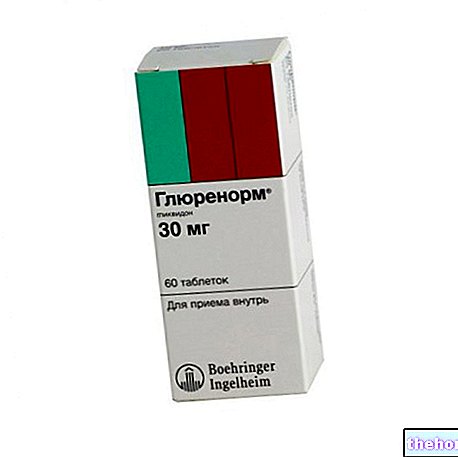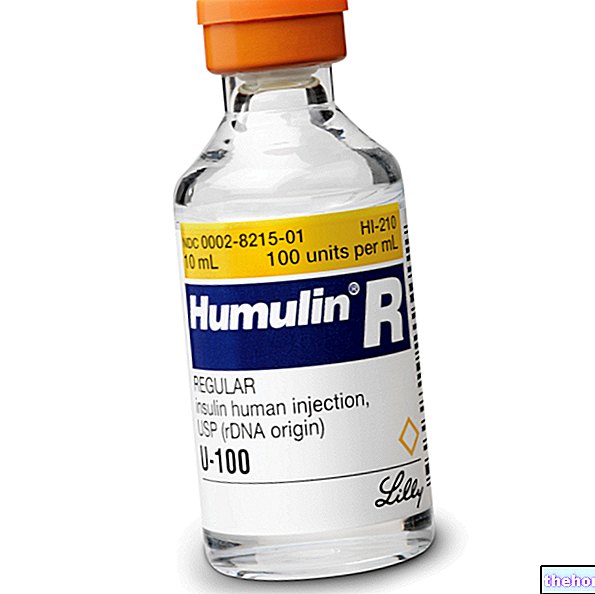
Alogliptin-based medicines can only be sold to patients on presentation of a restrictive repeatable medical prescription (RRL - medicines that can be sold to the public only on prescription from hospitals or specialists). For the purposes of reimbursement they are classified as class A drugs, for this reason, they can be dispensed at the expense of the National Health System (SSN).
Examples of Linagliptin-containing Medicines
- Incresync® (in combination with pioglitazone)
- Vipdomet® (in combination with metformin)
- Vipidia®
Note: in this article we will consider indications, warnings, interactions, side effects, use in pregnancy and during lactation and contraindications of alogliptin alone and not of alogliptin in combination with other antidiabetics.
when diet, exercise and weight reduction are not sufficient to control the disease. The active substance can also be used when other drugs (such as metformin) alone cannot control the pathology.
Alogliptin is generally used in combination with other antidiabetics, such as sulphonylureas (eg glipizide, glimepiride, etc.), metformin and / or thiazolidinediones (such as pioglitazone), or metformin and / or insulin.
Please Note
Dietary treatment and physical activity must NOT be interrupted even when you are taking antidiabetic drugs. In fact, the latter must be combined with a normoglycemic diet and regular exercise and not be used as an alternative to them.
;In any case, it is necessary to inform the doctor of one's health conditions, making him aware of the possible presence of ailments or diseases of any kind, even if not listed in the above list.
Please Note
- The use of alogliptin in children and adolescents less than 18 years of age is not recommended.
- When alogliptin is taken alone, it is unlikely to cause hypoglycemia. However, the latter can occur when alogliptin is taken with other antidiabetic drugs. In this regard, it is good to remember that the symptoms of hypoglycemia can negatively affect the ability to drive and use machines.
experiencing undesirable effects that differ in type and intensity, or not showing them at all.
The doctor must be alerted immediately and treatment immediately suspended if:
- Allergic reactions which can manifest themselves with symptoms such as:
- Skin rashes;
- Urticaria;
- Swelling of the lips, face, throat and / or tongue resulting in difficulty in breathing and swallowing;
- Feeling faint.
- Severe allergic reactions such as Stevens-Johnson syndrome and erythema multiforme which can be characterized by symptoms such as:
- Skin lesions;
- Spots on the skin that can develop into sores surrounded by pale or red rings
- Blistering and / or peeling of the skin with possible symptoms such as itching, fever, generally feeling unwell, aching joints, vision problems, burning, painful or itchy eyes and mouth sores.
- Signs and symptoms of pancreatitis such as severe and persistent stomach pain which may radiate to the back and may or may not be accompanied by nausea and / or vomiting.
Other side effects that may occur during treatment with alogliptin are:
- Hypoglycemia, in particular, when used in combination with other antidiabetic drugs. Symptoms may include: tremor; sweat; anxiety; blurred vision; tingling in the lips; pallor; changes in mood or confusion. If they appear, it is important to take sugars (lumps or sachets, sugary drinks, etc.) in order to prevent them from worsening. If the symptoms are severe, it is necessary to go to the emergency room or call 118.
- Flu-like symptoms;
- Skin rashes;
- Itching;
- Headache;
- Pain or burning in the stomach
- Diarrhea;
- Digestive disorders:
- Liver disorders.
Overdose
In case of taking excessively high doses of alogliptin which could constitute an overdose, it is necessary to contact your doctor immediately and go to the nearest emergency room, taking care to take the package of the medicine taken with you.
similar) and GIP (glucose-dependent insulinotropic polypeptide). Incretins are hormones produced in the intestine involved in glucose homeostasis. More precisely, they induce an increase in insulin biosynthesis, inhibit glucagon secretion and reduce hepatic glucose synthesis.Through the inhibition of the enzyme suitable for the degradation of incretins, therefore, alogliptin is capable of increasing their bioavailability and of promoting glycemic control through a glucose-dependent mechanism.
.
In the case of kidney disease, the dose of alogliptin administered can be reduced by the doctor to 6.25 mg or 12.5 mg of the active substance per day.
In case of severely impaired liver function, the use of alogliptin is NOT recommended.
. For this reason, as a precaution, the active ingredient should not be used in this category of patients.









.jpg)


















